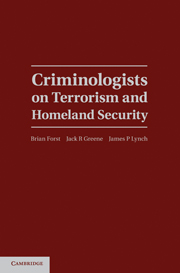17 - Using Open Source Data to Counter Common Myths about Terrorism
Published online by Cambridge University Press: 04 February 2011
Summary
There is a central irony in our approach to global terrorism: Though effective policy against terrorism depends especially on hard data and objective analysis, the study of terrorism has lagged behind many other fields in the social and behavioral sciences. In their encyclopedic review of political terrorism, Schmid and Jongman (1988, p. 177) identified more than 6,000 published works, but point out that much of the research is “impressionistic, superficial [and offers] … far-reaching generalizations on the basis of episodal evidence.” More recently, Silke (2003) concludes that only 3 percent of articles in terrorism journals used inferential analysis compared to 86 percent in forensic psychology and 60 percent in criminology. Similarly, Lum, Kennedy, and Sherley's (2006, p. 8) systematic review of over 14,000 terrorism articles published between 1971 and 2003 found that only 3 percent were based on quantitative analysis. Thus, as a result of the lack of systematic empirical research, an area that is especially in need of clear-eyed, dispassionate facts is especially susceptible to half truths and myths. The purpose of this review is to use a newly available data set on terrorist attacks around the world since 1970 to challenge ten common myths about terrorism. I use myths here in the everyday sense of fictitious or unscientific conclusions.
In fairness to researchers, studying terrorism raises unique challenges. To begin with, terrorism represents a type of behavior that is especially difficult to define and measure.
- Type
- Chapter
- Information
- Criminologists on Terrorism and Homeland Security , pp. 411 - 442Publisher: Cambridge University PressPrint publication year: 2011
References
- 5
- Cited by

